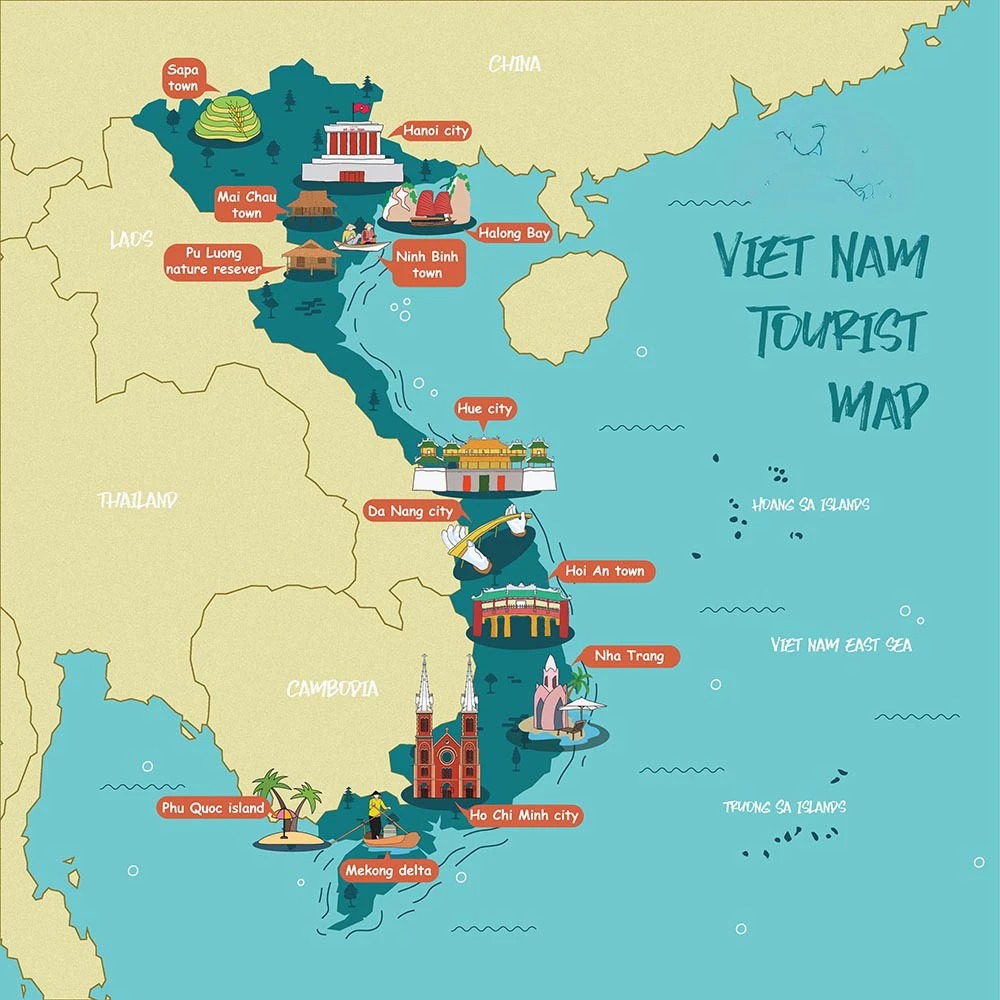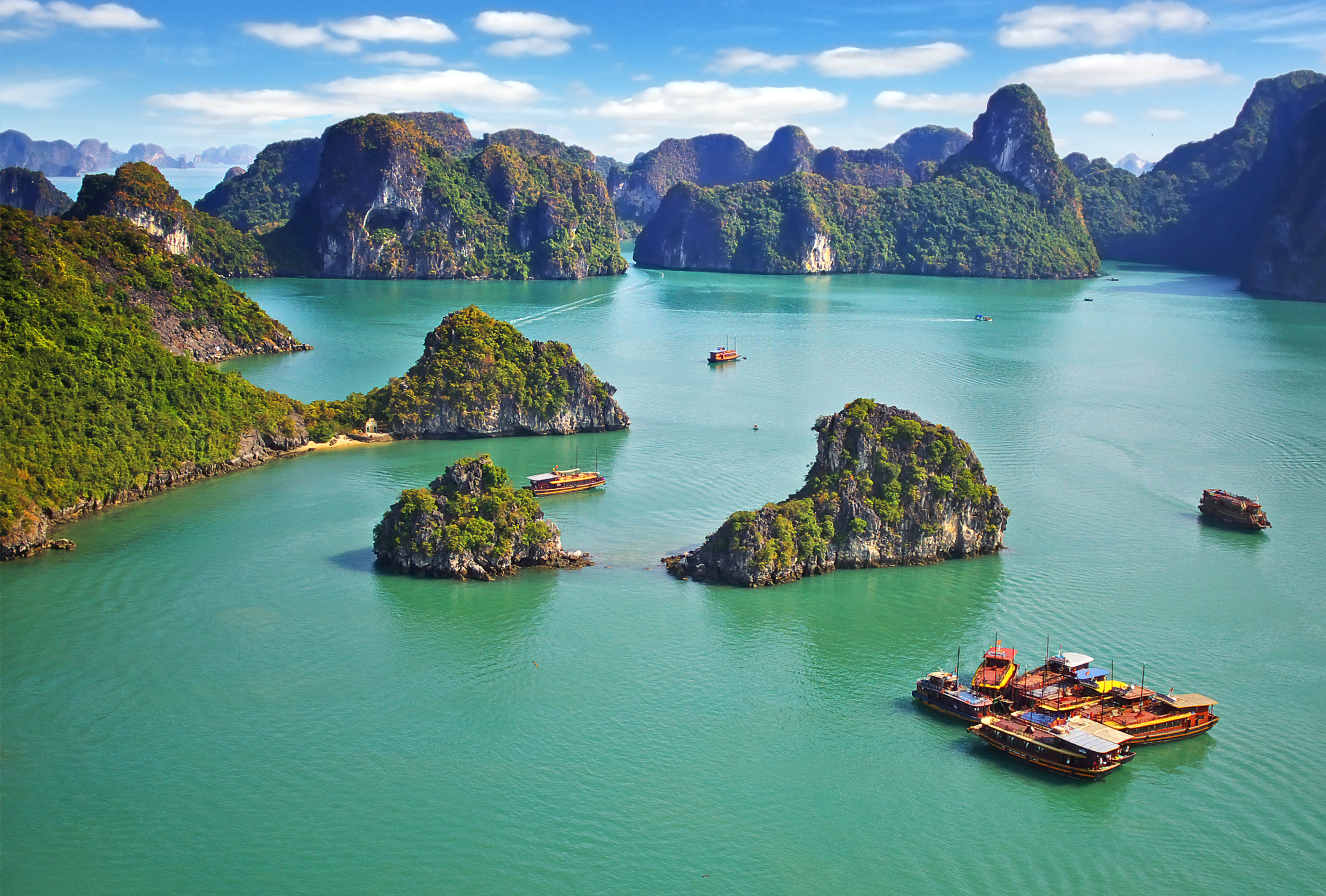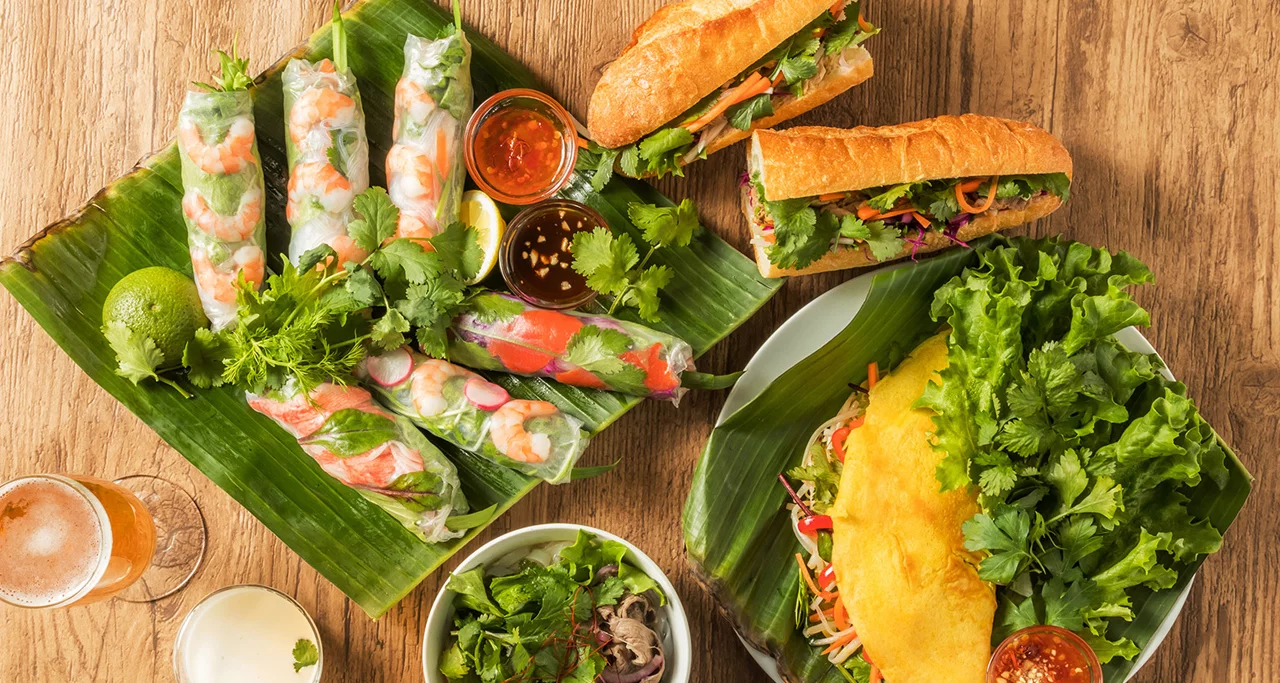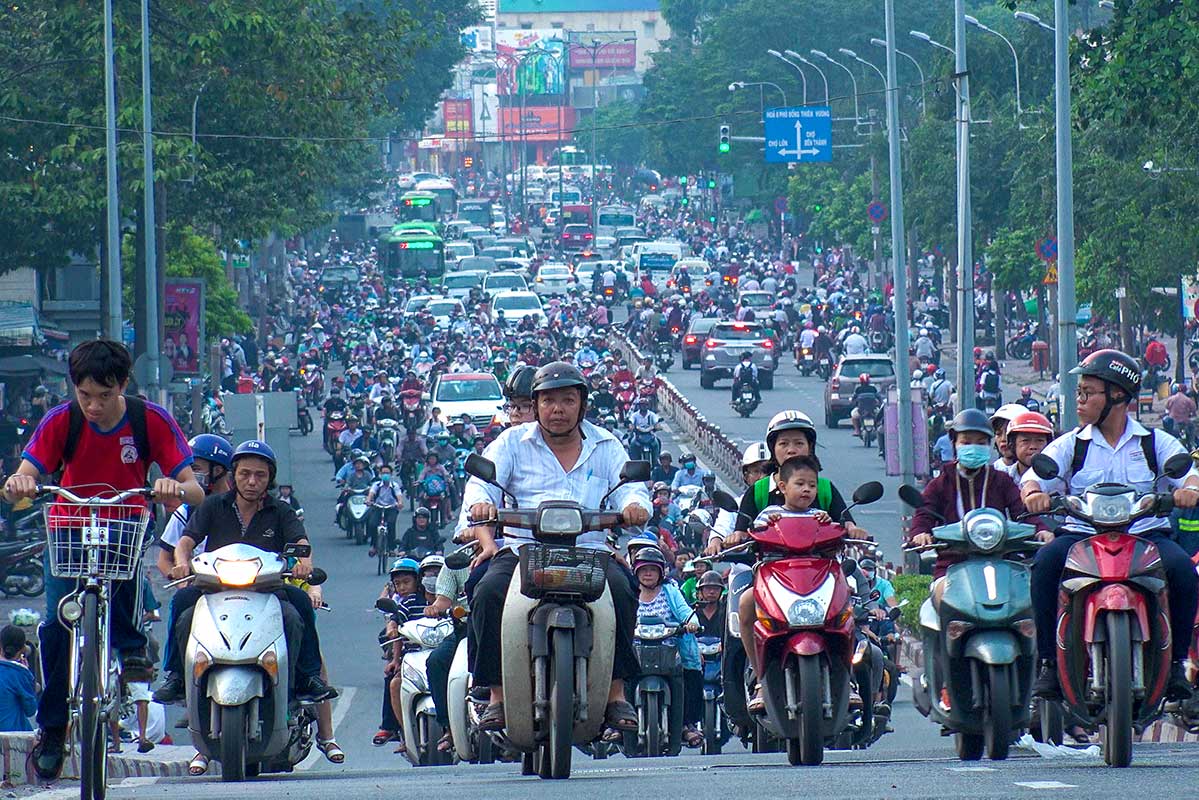Planning Your Dream Trip: How to Travel Vietnam
Vietnam, a land of breathtaking landscapes, vibrant culture, and delicious cuisine, beckons travelers from around the globe. From the bustling streets of Hanoi to the serene beauty of Ha Long Bay, and the historical charm of Hoi An to the Mekong Delta’s tranquil waterways, Vietnam offers an unforgettable experience. But planning a trip to Vietnam can seem daunting. This comprehensive guide will walk you through everything you need to know to plan an incredible adventure, covering visas, transportation, accommodation, costs, and must-see destinations.
1. Before You Go: Essential Pre-Trip Planning
Before you even start packing your bags, there are a few crucial steps to take to ensure a smooth and enjoyable trip.
1.1. Visa Requirements: Navigating the Entry Process
Visa requirements depend on your nationality. Many nationalities can obtain a visa on arrival (VOA), but it’s essential to check the latest regulations on the official Vietnam Immigration website or with your local Vietnamese embassy or consulate. Applying for an e-visa online is often the easiest and most convenient option. Make sure your passport has at least six months of validity remaining from your planned date of entry.
1.2. Best Time to Visit: Choosing the Right Season
Vietnam’s climate varies significantly from north to south. The north experiences a distinct winter (November to April) and summer (May to October), while the south has a dry season (December to April) and a rainy season (May to November). The central region is prone to typhoons during the rainy season (September to December). The best time to visit depends on your itinerary. For a trip covering the entire country, spring (March-April) or autumn (September-November) are generally ideal.
1.3. Vaccinations and Health: Staying Healthy on Your Trip
Consult your doctor or a travel clinic well in advance of your trip to discuss recommended vaccinations and health precautions. Common vaccinations for Vietnam include Hepatitis A and B, Typhoid, and Tetanus. Malaria is also a risk in some areas, so discuss preventative measures with your doctor. It’s also advisable to pack a basic first-aid kit with essentials like antiseptic wipes, bandages, pain relievers, and diarrhea medication.
1.4. Travel Insurance: Protecting Yourself from the Unexpected
Travel insurance is essential for any trip abroad, and Vietnam is no exception. Make sure your policy covers medical emergencies, trip cancellations, lost luggage, and theft. Read the policy carefully to understand the coverage limits and exclusions. Consider adventure sports coverage if you plan on participating in activities like trekking or scuba diving.
2. Getting Around: Transportation Options in Vietnam
Vietnam offers a variety of transportation options, each with its pros and cons. Choosing the right mode of transport can significantly impact your travel experience.
2.1. Flights: Quick and Convenient for Long Distances
Domestic flights are the fastest and most convenient way to travel between major cities. Several airlines operate domestic routes, including Vietnam Airlines, Vietjet Air, and Bamboo Airways. Booking in advance can often secure better prices.

2.2. Trains: Scenic and Comfortable Journeys
The Reunification Express train connects Hanoi and Ho Chi Minh City, offering a scenic and comfortable way to travel along the coast. The journey takes approximately 30-40 hours, but you can break it up by stopping at various cities along the way. Sleeper trains are available for overnight journeys.
2.3. Buses: Budget-Friendly and Extensive Network
Buses are the most affordable way to travel in Vietnam, and there is an extensive network connecting almost every town and city. However, buses can be crowded and uncomfortable, especially on long journeys. Open Tour buses are popular with backpackers, offering hop-on-hop-off tickets that allow you to explore at your own pace.
2.4. Motorbikes: Freedom and Flexibility (with Caution)
Renting a motorbike is a popular way to explore Vietnam, offering freedom and flexibility. However, it’s essential to be aware of the risks. Vietnamese roads can be chaotic, and traffic accidents are common. You’ll need an international driving permit with a motorcycle endorsement, and it’s crucial to wear a helmet and drive defensively. Consider the ‘easy rider’ tours where an experienced driver takes you around.
2.5. Taxis and Ride-Hailing Apps: Convenient for Short Distances
Taxis are readily available in major cities, but it’s essential to use reputable companies like Vinasun or Mai Linh to avoid being overcharged. Ride-hailing apps like Grab are also widely used and offer a convenient and often cheaper alternative to taxis.
3. Where to Stay: Accommodation Options for Every Budget
Vietnam offers a wide range of accommodation options, from budget-friendly hostels to luxurious resorts. Choosing the right accommodation can enhance your travel experience.
3.1. Hostels: Social and Affordable for Backpackers
Hostels are a popular choice for budget travelers, offering dorm rooms and private rooms at affordable prices. They’re also a great place to meet other travelers.
3.2. Guesthouses: Local Charm and Value for Money
Guesthouses are small, family-run hotels that offer a more personal and authentic experience. They’re often cheaper than hotels and provide a glimpse into local life.
3.3. Hotels: Comfort and Convenience in All Categories
Vietnam has a wide range of hotels, from budget-friendly options to luxury resorts. Hotels offer comfort, convenience, and a variety of amenities.
3.4. Homestays: Immersive Cultural Experiences
Homestays offer an immersive cultural experience, allowing you to stay with a local family and learn about their traditions and way of life. This is especially popular in rural areas.
3.5. Resorts: Relaxation and Luxury in Beautiful Settings
Vietnam boasts stunning resorts, particularly along the coast. These offer luxurious amenities, beautiful settings, and opportunities for relaxation and recreation.
4. What to See and Do: Must-Visit Destinations in Vietnam
Vietnam is a country of diverse landscapes and rich culture, offering a plethora of attractions for every type of traveler.
4.1. Hanoi: The Capital City’s Charm
Hanoi, the capital of Vietnam, is a city of ancient temples, bustling markets, and delicious street food. Explore the Old Quarter, visit Hoan Kiem Lake, and enjoy a traditional water puppet show.
4.2. Ha Long Bay: A Natural Wonder
Ha Long Bay, a UNESCO World Heritage Site, is a stunning archipelago of limestone karsts and emerald waters. Take a cruise to explore the bay, kayak through hidden caves, and enjoy breathtaking views.

4.3. Sapa: Trekking and Hill Tribe Culture
Sapa, located in the northern mountains, is a popular destination for trekking and experiencing hill tribe culture. Hike through rice terraces, visit local villages, and enjoy panoramic views.
4.4. Hoi An: Ancient Town and Tailoring Paradise
Hoi An, a UNESCO World Heritage Site, is a charming ancient town with well-preserved architecture, colorful lanterns, and delicious street food. It’s also known for its tailoring shops, where you can get custom-made clothing at affordable prices.
4.5. Hue: Imperial City and Historical Significance
Hue, the former imperial capital of Vietnam, is home to the Citadel, a UNESCO World Heritage Site. Explore the imperial tombs, visit the Perfume River, and learn about Vietnam’s history.
4.6. Nha Trang: Beaches and Water Activities
Nha Trang is a popular beach resort town with beautiful beaches, clear waters, and a variety of water activities. Go swimming, sunbathing, snorkeling, or scuba diving.
4.7. Ho Chi Minh City (Saigon): Modern Metropolis with Historical Roots
Ho Chi Minh City, formerly Saigon, is a bustling metropolis with a mix of modern skyscrapers and historical landmarks. Visit the War Remnants Museum, explore the Cu Chi Tunnels, and experience the vibrant nightlife.
4.8. Mekong Delta: Floating Markets and River Life
The Mekong Delta is a fertile region known for its floating markets, rice paddies, and river life. Take a boat trip to explore the delta, visit local villages, and sample fresh fruits and vegetables.
5. Food and Drink: A Culinary Adventure
Vietnamese cuisine is renowned for its fresh ingredients, flavorful herbs, and delicate spices. Exploring the local food scene is an essential part of any trip to Vietnam.
5.1. Pho: The Iconic Noodle Soup
Pho is a Vietnamese noodle soup made with broth, rice noodles, herbs, and meat (usually beef or chicken). It’s a staple of Vietnamese cuisine and can be found everywhere from street stalls to restaurants.
5.2. Banh Mi: The Vietnamese Sandwich
Banh Mi is a Vietnamese sandwich made with a baguette, pate, meat, pickled vegetables, and cilantro. It’s a delicious and affordable snack or meal.
5.3. Spring Rolls: Fresh and Flavorful
Spring rolls are made with rice paper, vermicelli noodles, vegetables, and meat or seafood. They’re often served with a dipping sauce.
5.4. Cao Lau: A Hoi An Specialty
Cao Lau is a noodle dish unique to Hoi An, made with thick noodles, pork, greens, and crispy croutons. The noodles are said to be made with water from a specific well in Hoi An.

5.5. Fresh Seafood: Coastal Delights
Vietnam has a long coastline, so fresh seafood is abundant. Enjoy grilled fish, prawns, crab, and other seafood dishes at restaurants along the coast.
5.6. Vietnamese Coffee: Strong and Sweet
Vietnamese coffee is strong and sweet, typically brewed using a phin filter and served with condensed milk. It’s a popular drink throughout the country.
6. Money Matters: Budgeting and Currency Exchange
The Vietnamese currency is the Dong (VND). ATMs are widely available in major cities, but it’s advisable to carry some cash, especially when traveling to rural areas. Credit cards are accepted in some hotels and restaurants, but not everywhere.
6.1. Daily Budget: Estimating Your Expenses
The cost of traveling in Vietnam can vary depending on your travel style. On a budget, you can expect to spend around $20-30 per day, including accommodation, food, and transportation. Mid-range travelers can expect to spend around $50-100 per day, while luxury travelers can spend significantly more.
6.2. Tipping: Customs and Guidelines
Tipping is not customary in Vietnam, but it’s always appreciated for good service. You can tip taxi drivers, restaurant staff, and tour guides if you’re happy with their service.
6.3. Bargaining: A Common Practice
Bargaining is a common practice in markets and street stalls. Don’t be afraid to negotiate the price, especially when buying souvenirs or clothing.
7. Cultural Considerations: Respecting Local Customs
Vietnam has a rich culture with unique customs and traditions. It’s important to be respectful of local customs to avoid causing offense.
7.1. Dress Code: Modesty and Respect
Dress modestly, especially when visiting temples or pagodas. Avoid wearing revealing clothing.
7.2. Public Displays of Affection: Keep it Low-Key
Public displays of affection are generally frowned upon in Vietnam.
7.3. Table Manners: Basic Etiquette
Use chopsticks to eat, and avoid sticking them upright in your rice bowl, as this resembles incense offerings for the dead.
7.4. Removing Shoes: When Required
Remove your shoes before entering someone’s home or a temple.
8. Safety Tips: Staying Safe and Secure
Vietnam is generally a safe country for travelers, but it’s important to be aware of potential risks and take precautions.
8.1. Petty Theft: Watch Your Belongings
Petty theft, such as pickpocketing and bag snatching, can occur in crowded areas. Be aware of your surroundings and keep your belongings secure.
8.2. Scams: Be Aware and Avoid Them
Be aware of common scams, such as inflated taxi fares and fake tour operators. Use reputable companies and be cautious of unsolicited offers.
8.3. Traffic Safety: Exercise Caution
Traffic in Vietnam can be chaotic. Be extra cautious when crossing the street, and consider using taxis or ride-hailing apps instead of driving yourself.

9. Essential Vietnamese Phrases: Communicate with Locals
Learning a few basic Vietnamese phrases can go a long way in enhancing your travel experience and connecting with locals.
* **Xin chào:** Hello
* **Cảm ơn:** Thank you
* **Không có gì:** You’re welcome
* **Bao nhiêu tiền?:** How much?
* **Tôi không hiểu:** I don’t understand
* **Nhà vệ sinh ở đâu?:** Where is the toilet?
10. Packing Essentials: What to Bring on Your Trip
Packing the right items can make your trip to Vietnam more comfortable and enjoyable.
* **Lightweight Clothing:** Pack lightweight, breathable clothing suitable for the warm and humid climate.
* **Comfortable Shoes:** Bring comfortable shoes for walking and exploring.
* **Rain Gear:** Pack a raincoat or umbrella, especially if you’re traveling during the rainy season.
* **Insect Repellent:** Protect yourself from mosquitoes with insect repellent.
* **Sunscreen:** Protect your skin from the sun with sunscreen.
* **First-Aid Kit:** Pack a basic first-aid kit with essentials.
* **Adapter:** Bring a universal adapter for your electronic devices.
By following this comprehensive guide, you can plan an unforgettable trip to Vietnam, experiencing the best of this captivating country. From the vibrant cities to the serene landscapes, Vietnam offers something for every traveler. Enjoy your adventure!


